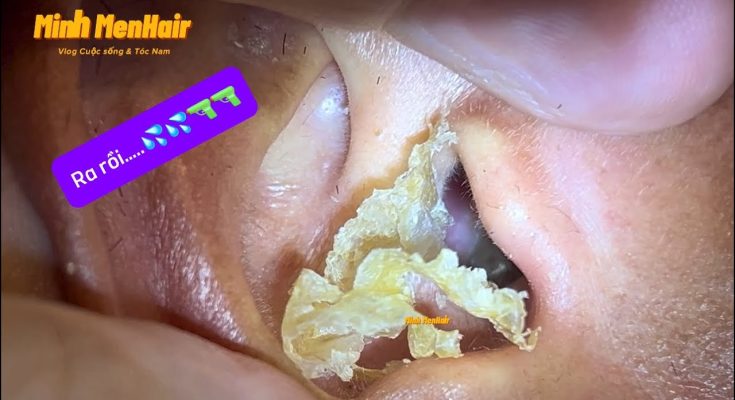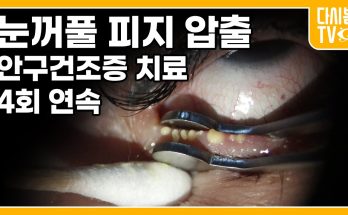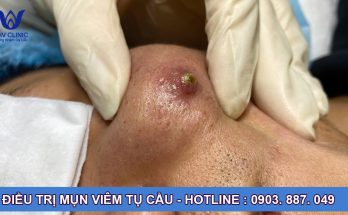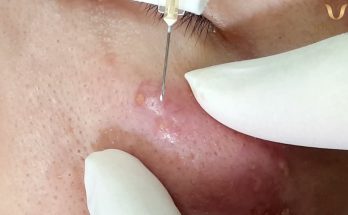Earwax
Ear, Nose & Throat Services
Earwax or cerumen (SUH-rum-un) is a sticky, waxy, yellowish substance made in the outer ear canal. This is the place between the eardrum and the opening of the ear (Picture 1). There are special glands in this area that make earwax. Once the wax is made, it slowly moves out toward the opening of the ear. The ear then sheds the wax naturally when a person showers or swims or it falls out on its own.
Earwax keeps the ears healthy:
- Protects and moisturizes the skin of the ear canal
- Has special chemicals that help to fight infection in the ear canal
- Shields the eardrum by trapping dirt and dust that enters the ear. If these get down into the canal, they can injure or irritate the eardrum.
Impacted Earwax
- When earwax builds up and gets stuck in the ear, it is called an impaction or blockage.
- Impacted earwax is usually caused when someone puts an object, such as a cotton swab, bobby pin, or rolled napkin corner into the ear to scratch or clean it. The object pushes the earwax down deeper into the ear canal.
- Children more prone to impacted earwax may:
- be born with narrower ear canals.
- make a lot of extra ear wax normally.
- have a dry skin condition, such as eczema.
- have a history of frequent infections of the outer ear, called external otitis.
- keep too much moisture in the ear if water cannot drain out properly.
- Using earplugs or earbuds often can push wax back down into the ear.
Symptoms of Impacted Earwax
A child may have no symptoms of an impaction. If they do have symptoms, the most common are:
- Earache
- Problems hearing – muffled sounds, decreased hearing
- Dizziness
- Fullness, pressure, or plugged ears
- Ringing in the ears
- Itchiness inside the ear
- Drainage or odor from the ear
- Sometimes, you can see the hard wax stuck in the ear.
Treatment for Impacted Earwax
- If your child has no symptoms, then no treatment may be needed. Over time, the problem may go away on its own.
- Do not use any folk remedies, such as ear candles, without first checking with your child’s health care provider. Ear candles are not safe or effective.
- If your child has symptoms, call the health care provider. They may ask you to bring your child to the office for treatment or recommend ways to try to soften the earwax at home.
- Use an ear dropper to put drops (only ones approved by the health care provider), mineral oil, baby oil, or glycerin into the ear.
- Put a few drops of hydrogen peroxide diluted with warm water, a 50/50 mix, into the ear canal. Do not use a bulb syringe without checking first.
- Treatments that should only be done by a health care provider include:
- Flushing the ear canal with warm water using gentle pressure.
- Removing the earwax with small, special tools.
Prevention
- Never put a cotton swab, finger, paperclip or any other object in your child’s ear canal. This can cause injury, bleeding and make an ear wax impaction worse.
- If recommended by the health care provider, use ear drops once a week.
- Follow-up with the health care provider to have your child’s ears cleaned regularly.
When to Call the Health Care Provider
Call if your child has pain, discomfort, or bleeding from the ear after being treated or has problems hearing.
Earwax
HH-I-328 12/10, Revised 2/22 Copyright 2010, Nationwide Children’s Hospital
Why Do Ears Make Wax?
Earwax is made in the outer ear canal, the area between the fleshy part of the ear on the outside of the head and the middle ear. The medical term for earwax is cerumen (seh-ROO-mun).
Earwax has some important jobs. It:
- acts as a waterproof lining of the ear canal, protecting it and the eardrum from germs that can cause infection
- traps dirt, dust, and other particles, keeping them from injuring or irritating the eardrum
The wax makes its way through the outer ear canal to the opening of the ear. Then it either falls out or comes out during bathing. In most people, the outer ear canal makes earwax all the time, so the canal always has enough wax in it.
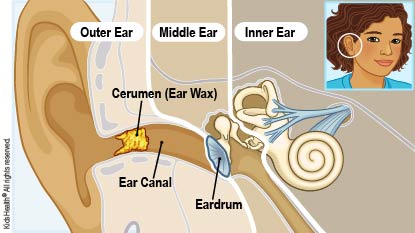
Does Earwax Need to Be Removed?
Usually, there’s no need to remove earwax because it comes out by itself. Sticking anything into a child’s ears raises the risk of infection or damage to the ear canal or eardrum. Cotton swabs are handy for a variety of grooming needs, but should not be used to remove earwax. In most cases, regular bathing is enough to keep it at healthy levels.
While some people have more earwax than others, in general the ear makes as much wax as it needs. Rarely, kids’ ears do make too much earwax. And sometimes earwax can build up and block the ear canal, especially when pushed in by a finger, cotton swab, or other object. This is called “impaction.” If it affects hearing or causes pain or discomfort, a doctor can remove it.
Parents — and kids — shouldn’t attempt to remove earwax at home, even with remedies that promise to be safe and effective. Doing so risks damage to the ear canal and, possibly, a child’s hearing.
What Can Parents Do?
If your child complains of ear discomfort and you see earwax in the ear, it’s OK to wipe the outside of the ear with a washcloth. But don’t use a cotton swab, a finger, or anything else to poke inside the ear. It could damage the delicate ear canal and eardrum, or pack the wax in even further.
Check with your doctor before using an over-the-counter earwax removal treatment.
When Should I Call the Doctor?
Call the doctor if your child has:
- ear pain, itchiness, or discomfort (like a blocked feeling in the ears)
- hearing problems
In infants and toddlers, tugging at the ears can be sign of an ear problem.
Sometimes doctors will remove earwax:
- if it’s painful, itchy, or uncomfortable
- if affects hearing
- to get a better view of the eardrum to check for problems
Earwax removal usually is done in the doctor’s office. There might be a little discomfort but it isn’t painful. If a child can’t sit still or cooperate, the doctor can remove it in an operating room while the child is under general anesthesia.
Doctors can remove earwax in different ways, including:
- scooping it out, pulling it out, or suctioning it out with special instruments designed for this purpose
- flushing it out with warm water. Sometimes a doctor will put drops into the ear canal to soften the wax and break it down. Or they might ask you to do this at home and then return to the doctor for wax removal.
Removal takes only a few minutes. If there’s a sign of infection, the doctor may prescribe antibiotic ear drops.
What Else Should I Know?
Ear candling has gained a lot of attention as a home remedy for earwax removal. But it hasn’t been proved to be safe or effective, and can be dangerous.
In ear candling, one end of a cone-type device is inserted into the ear canal and the other end is set on fire. The idea is that the fire and the cone form a vacuum and extract the wax. But trying this at home carries a high risk of:
- burning the ear canal
- punching a hole in the eardrum, which can cause permanent hearing damage
Whenever you have any concerns about your child’s ears or hearing, call your doctor.
